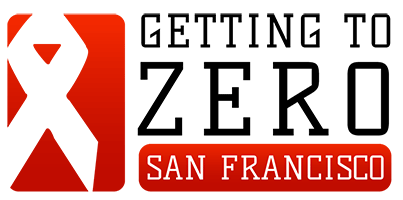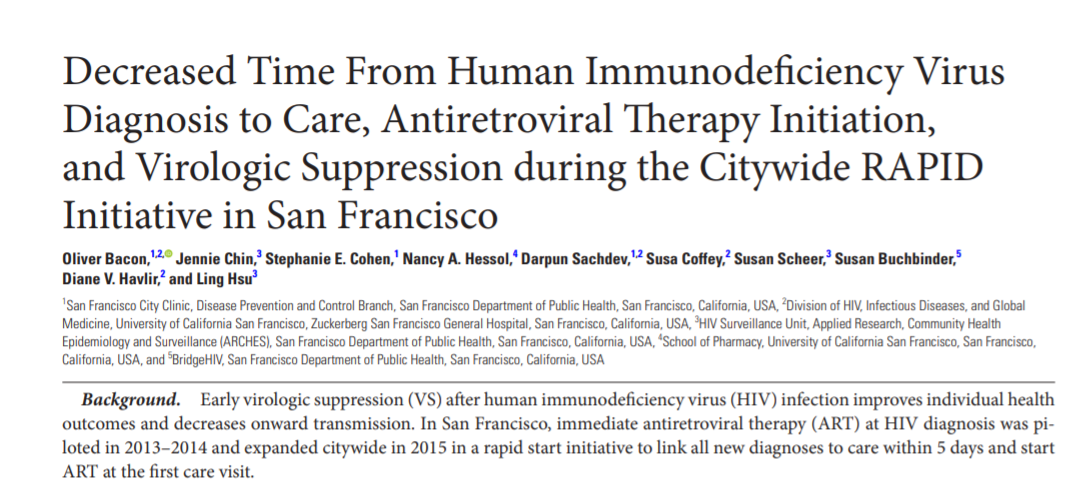[Publication] Decreased Time from HIV Diagnosis to Care, ART Initiation, and Virologic Suppression during the Citywide RAPID Initiative in San Francisco

RAPID Restart: Immediate Restart of ART for Persons Re-Engaging in Care (October 2020)
October 15, 2020Progress in HIV care outcomes among Black men in San Francisco
March 21, 2021[Publication] Decreased Time from HIV Diagnosis to Care, ART Initiation, and Virologic Suppression during the Citywide RAPID Initiative in San Francisco
Bacon O, Chin J, Cohen SE, Sachdev D, Coffey S, Scheer S, Hessol NA, Buchbinder S, Havlir DV, Hsu L. Decreased Time from HIV Diagnosis to Care, ART Initiation, and Virologic Suppression during the Citywide RAPID Initiative in San Francisco. Clin Infect Dis. 2020 May 25:ciaa620. doi: 10.1093/cid/ciaa620. Epub ahead of print. PMID: 32449916.
Abstract
Background: Early virologic suppression after HIV infection improves individual health outcomes and decreases onward transmission. In San Francisco, immediate ART at HIV diagnosis was piloted in 2013-14 and expanded citywide in 2015 in a rapid start initiative to link all new diagnoses to care within five days and start ART at the first care visit.
Methods: HIV providers and linkage navigators were trained on a rapid start protocol with sites caring for vulnerable populations prioritized. Dates of HIV diagnosis, first care visit, ART initiation, and virologic suppression were abstracted from the SFDPH HIV surveillance registry.
Results: During 2013 to 2017, among 1354 new HIV diagnoses in San Francisco, median days from diagnosis to first virologic suppression decreased from 145 to 76 (48%, p<0.0001) and median days from first care visit to ART initiation decreased from 28 to 1 (96%, p<0.0001). By 2017, 28% of new diagnoses had a rapid start, which was independently associated with Latinx ethnicity (AOR 1.73, 95%CI 1.15-2.60) and recent years of diagnosis (2017 AOR 16.84, 95%CI 8.03-35.33). Persons with a rapid ART start were more likely to be virologically suppressed within 12 months of diagnosis than those with a non-rapid start (RR 1.17, 95% CI 1.10-1.24).
Conclusions: During a multisector initiative to optimize ART initiation, median time from diagnosis to virologic suppression decreased by nearly half. Immediate ART at care initiation was achieved across many, but not all, populations, and was associated with improved suppression rates.
Download. If you have questions, please contact Susa Coffey (susa.coffey@ucsf.edu), Chair of the GTZ RAPID Committee.

